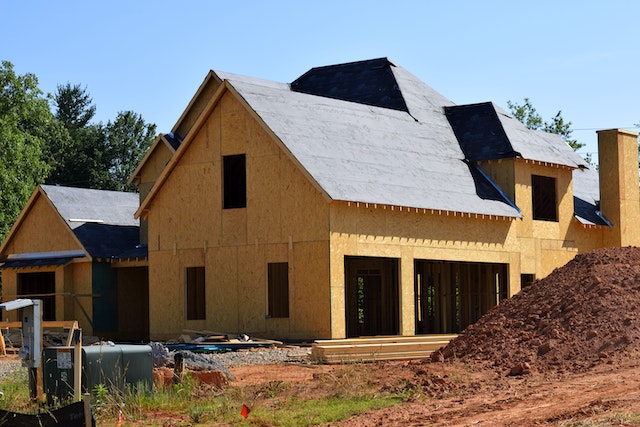When choosing a material for your roof, several key factors require careful consideration to ensure a wise, long-term investment. The roofing material needs to complement your home’s architectural style, withstand the local climate, align with your budget, and meet local building codes. Remember, an appropriate roofing material impacts your home’s durability, energy efficiency, and overall curb appeal, making it a critical aspect of home maintenance and improvement. So, no matter if you’re planning on installing a metal or an asphalt shingle roof, let’s dive deeper into how to select the perfect material for your project.
1. Examine Product Warranties
Warranties can vary greatly between manufacturers and can cover various issues, including defects in the material, premature aging, and resistance to certain weather conditions. Contractors at Monarch Roofing recommend having a comprehensive warranty as it ensures that if your roof does not perform as expected, you might be eligible for repair or replacement at no or low cost. However, it’s crucial to understand that warranties often have limitations and exclusions.
They may only cover the cost of the materials, not the labor required to repair or replace them, or they may not cover damage resulting from improper installation or lack of maintenance. Consequently, reading and understanding the warranty terms and conditions thoroughly is essential before making your final decision. Also, remember to choose a reputable manufacturer with a solid track record of honoring their warranties.
2. Research the Different Types of Roofing Materials
Before installing a new roof, thorough research into the various roofing materials available is crucial. Delve into how each type, such as asphalt shingles, wooden shakes, metal roofing, or slate tiles, meets your needs. Analyze each option’s lifespan, durability, maintenance requirements, and aesthetic appeal.
It’s crucial to understand the installation process for each material. Some may require specialized skills, potentially increasing labor costs. Investigate the cost-effectiveness of each option, including purchase, installation, maintenance, and potential replacement costs. This helps determine the most economical roofing material. Remember, the right roof protects your home and enhances its aesthetic appeal and value.
3. Consider the Climate in Your Area
Different materials perform differently in various weather conditions. For instance, in areas with heavy rainfall or snowfall, consider using water-resistant materials like metal or slate that can withstand the weight of snow. Opt for lighter roofing materials that reflect the sun’s rays in hotter climates to keep your home cool and reduce energy costs.
Windy conditions require roofing materials that can resist wind uplift; in these cases, asphalt shingles or metal roofing would be a strong choice. Therefore, understanding how different materials fare under local weather conditions will ensure that your roof can protect your home effectively, last longer, and save you money in maintenance costs.
4. Look Into the Local Building Codes and Restrictions
When selecting a roofing material, it is crucial to understand and adhere to local building codes and restrictions. These codes prioritize community safety, health, and well-being and specify material types, installation methods, and fire resistance levels. For example, in wildfire-prone areas, roofing materials must meet specific fire resistance ratings.
Some neighborhoods or homeowner’s associations may have restrictions on roofing materials to maintain a uniform aesthetic. Contact your local building department, home builder’s association, or a roofing contractor for information. Non-compliance can result in penalties or the need to redo the project, so understand the regulations beforehand.
5. Understand the Maintenance Requirements
Understanding the maintenance needs of your chosen roofing material is crucial. Materials like metal roofing or slate tiles are low-maintenance, needing only occasional inspection and cleaning. However, wood shakes may require regular treatments to prevent rot, and asphalt shingles may need more frequent replacement due to wear and tear.
Maintenance can also involve gutter cleaning, roof debris removal, and post-severe weather damage inspection. Keep in mind that some materials may need professional maintenance, leading to higher costs. So, consider your willingness, ability, and budget for ongoing maintenance when selecting your roofing material. Regular maintenance prolongs your roof’s lifespan and maintains its appearance and effectiveness.
6. Investigate Fire Safety Ratings
Fire safety is a critical factor to consider when choosing a roofing material. Materials with higher fire resistance ratings can help protect your home and give you more time to evacuate in the event of a fire. Look for materials tested and certified by an independent laboratory, such as Underwriters Laboratories (UL) or Factory Mutual (FM), which assesses flammability, wind resistance, and impact resistance.
Some insurance companies may also offer discounts on homeowners’ insurance premiums for homes with certain roofing materials that meet specific fire safety standards. Therefore, it’s essential to research the fire safety ratings of your chosen material to ensure both the safety of your home and potential cost savings.
Choosing a roof material is a significant decision. Thorough research, consideration of key factors, and compliance with local regulations are essential for a successful outcome. Remember these six points to select the perfect material that enhances your home’s value and appearance. Consulting with a professional roofing contractor can also provide valuable guidance tailored to your needs and location.
